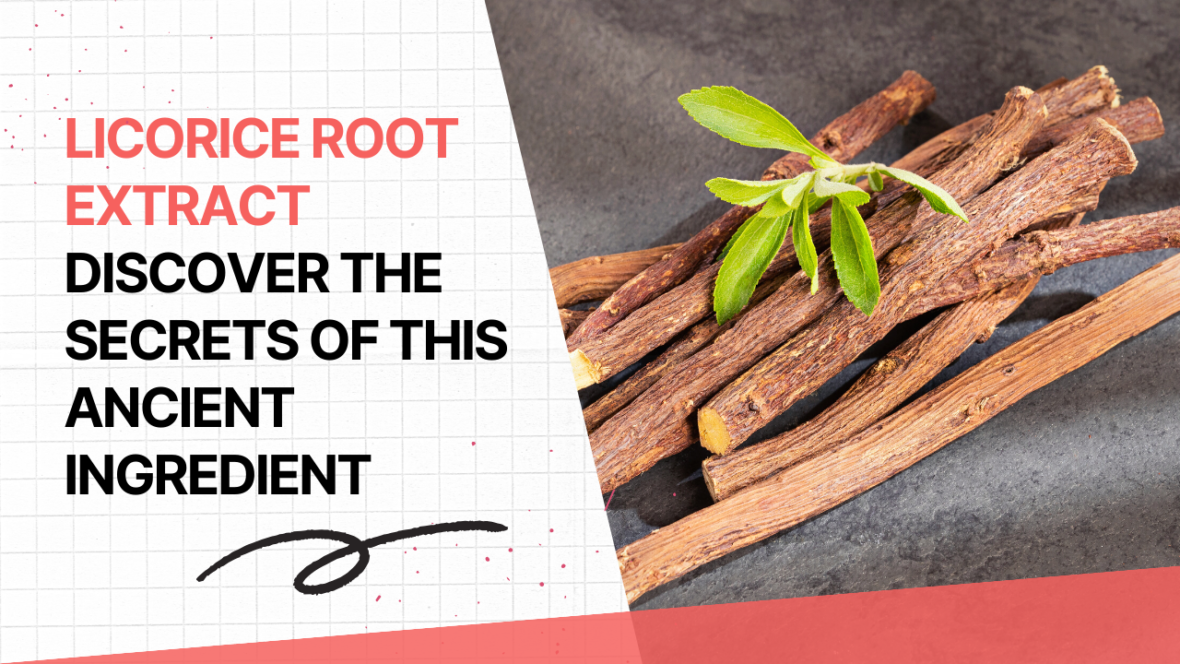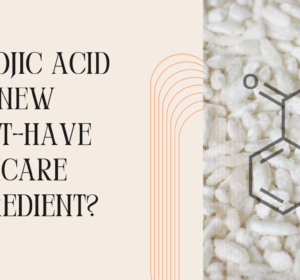In the world of skincare, where trends appear and disappear like shooting stars, there are few ingredients that keep on shining. licorice root extract is one of those ingredients that has been here for ages.
Licorice root extract is like a time-travelling legend. It is a multitasker ingredient you wish you had in your skincare stash. So, sit down and relax as we dive into this ingredient. Get ready to discover how this root has become the VIP of our skincare routines.

A bit of history
Licorice root is an ingredient which has been used since ancient times. Traditional Chinese medicine used it since 200 years b. C. Shennon Bencao Jing, a Chinese book on medicinal plants, already mentions licorice root. This book says that licorice root can strengthen bones and muscles. It also mentions the adverse effects consequence of excessive consumption.
Egyptians used licorice root to treat respiratory diseases. Romans and Greeks used it for the same purpose. From then, people have been using this root up to the modern era. Nowadays, licorice root has a number of uses, in medicine as well as in cosmetics.
What is Licorice Root?
Licorice is the common name of the plant Glycyrrhiza Glabra. It is a plant of the bean family Fabaceae.
This plant is native to Western Asia, North Africa and southern Europe. It has been used as a flavouring ingredient in beverages, cakes, candies and medicine.
As already mentioned, it has been used traditionally as a medicinal herb. However, excessive consumption may result in hypertension, low blood potassium and muscle weakness.
The part of the plant used is the root, which has a sweet taste, a sort of aniseed taste. I remember when I was a girl people used to sell on the street sticks of that root for a few cents. All the kids were all day with a licorice root stick in our mouths……
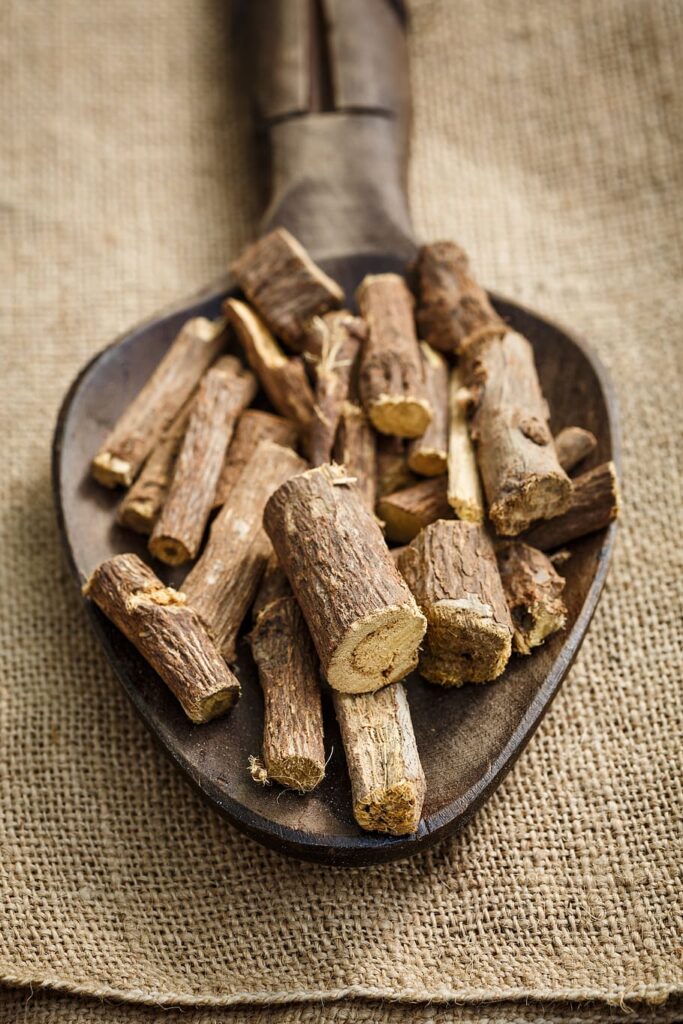
Licorice Root Extract Chemical Composition
Licorice root has numerous types of compounds in its chemical composition. Some of them are triterpene, saponins, flavonoids, polysaccharides, pectins, simple sugars, amino acids, mineral salts and many others. The figure below shows a small part of all the chemicals included in the licorice root extract classified by type.
The chemical ingredient list is huge. However, what makes licorice root extract unique is the combination of the following four chemicals:
- Glycyrrhizin. This is a saponin responsible for the sweet taste. It has also exceptional properties for the skin.
- Liquiritin. Glucose molecule derived from liquiritigenin. Liquiritin has strong anti-oxidant properties.
- Licochalcone. Polyphenol which reduces skin irritation.
- Glabrone. This molecule acts over the melanogenesis, the process which produces melanin.
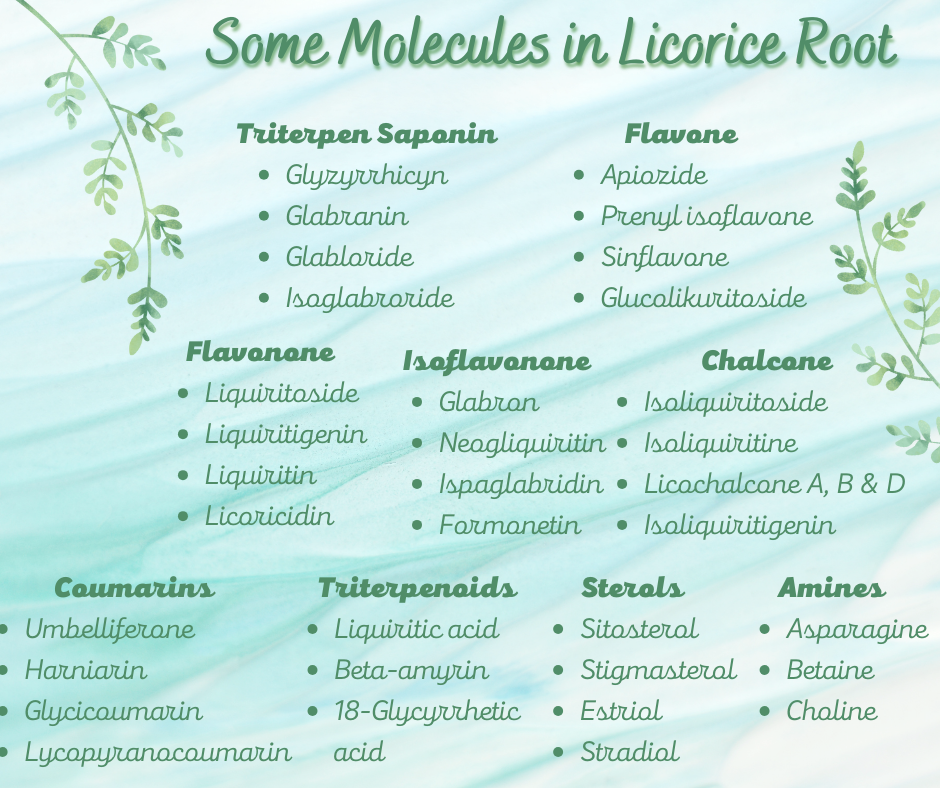
Medicinal properties of Licorice Root Extract
Licorice root extract has been used since ancient times to treat different health problems. The scope of this post is not to discuss the medicinal uses of licorice root. As an example, licorice root extract is a good ingredient as:
- Anti-inflammatory
- Cough suppressant
- Spleen and stomach detoxifying
- Stopping muscle spams
- Revitalising the liver
Cosmetics use of Licorice Root Extract
Licorice root extract has also numerous benefits for the skin. Nowadays, it is fairly common to find skincare products containing this active ingredient. The most important effects of licorice root extract on the skin are:
Brightens skin and improves skin tone
Licorice root extract contains a high amount of vitamin C, responsible for this effect.
Helps to reduce dark spots.
Licorice root extract helps to reduce dark spots like age hyperpigmentation and melasma. This ingredient is rich in glabrone, a tyrosinase enzyme inhibitor. This enzyme is involved in the melanogenesis, the melanin production process. Some studies show that licorice root extract is better than hydroquinone in treating dark spots. licorice root extract produces fewer adverse effects than hydroquinone.
Anti-bacterial properties
Licorice root extract can fight P. Acne bacteria, which are responsible for acne breakouts. This root extract is a good option for people with acne-prone skin.
Activates immunity system
When the immune system is active, the cell regeneration turnover speeds up. That is important to people with mature skin. Licorice root extract is a good anti-ageing ingredient.
Hydrates the skin
The licorice root extract has a high humectant capacity. It helps to strengthen the natural skin barrier, improving skin tone and elasticity.
Few tips to make the most of licorice root extract
As with any other skincare ingredient, there are three basic tips that will help you to make the most of any ingredient. That applies to licorice root extract. These three tips are:
Start slow. Your skin needs time to adjust to any new ingredient. I always advise you to start using any new ingredient once a week and increase gradually until using it daily, once the skin is adjusted to it.
Always do a patch test before using any ingredient for the very first time and stop using it immediately if you suffer from any sort of irritation.
Be patient. Most of the skincare ingredients will not show results in a night. They need days, weeks or even months to start producing results. You need to be patient and apply consistently the product. You will not speed up the process by applying higher amounts of product, just the opposite. An excess of the product may produce irritation.
Give time for the ingredient to work and keep constantly applying it.
Less is more. Do not mix this ingredient with too many others. The probability of suffering an irritation increases with the number of products you use.
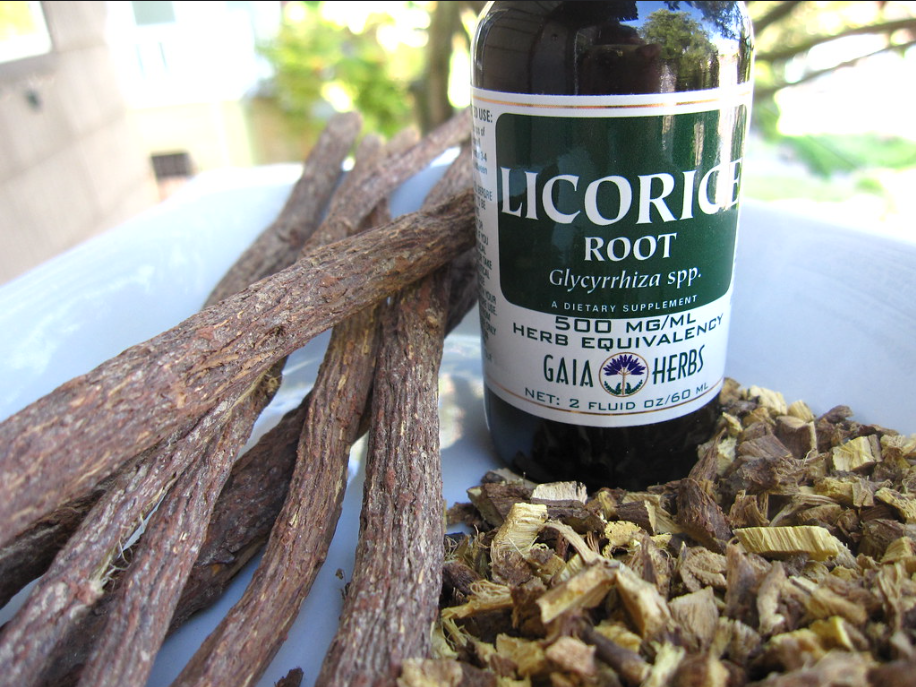
How to include it in your routine
Licorice root extract is indicated for a number of skin concerns. It is a good ingredient for people with acne-prone skin, mature skin or hyperpigmentation problems.
This ingredient also helps to treat other concerns like dull skin, eczema, rosacea and atopic dermatitis.
Licorice root extract typically comes as a serum to apply before the moisturiser, over clean skin, preferably by a double cleanse.
Side effects and adverse reactions
It is not common to suffer a side effect using licorice root extract on its own. However, you should be careful when using it in combination with other ingredients.
A good combo to brighten skin and fight free radicals is licorice root extract with vitamin C and/or niacinamide. These two ingredients on their own are good at fighting free radicals and the combination with licorice root extract is amazing.
Try to avoid mixing licorice root extract with hydroquinone and retinol. The adverse reaction may come from the hydroquinone or retinol rather than from the licorice root extract, but it is better to be cautious.
Avoid the use of licorice root extract during pregnancy or in combination with diuretics, contraceptive pills, corticosteroids, or drugs to regulate blood pressure.

So there you have it. Licorice root extract is like the secret weapon you never knew you needed. Whether it is calming down redness, giving your skin some glow, or treating a specific concern, licorice root extract deserves a round of applause.
So next time you are scanning an ingredient list, keep an eye out for this ingredient. Your skin will thank you for giving it a taste of this natural magic.


Bear in mind that some of the links in this post are affiliate links and if you go through them to make a purchase I will earn a commission. Keep in mind that I link these companies and their products because of their quality and not because of the commission I receive from your purchases. The decision is yours, and whether or not you decide to buy something is completely up to you.
